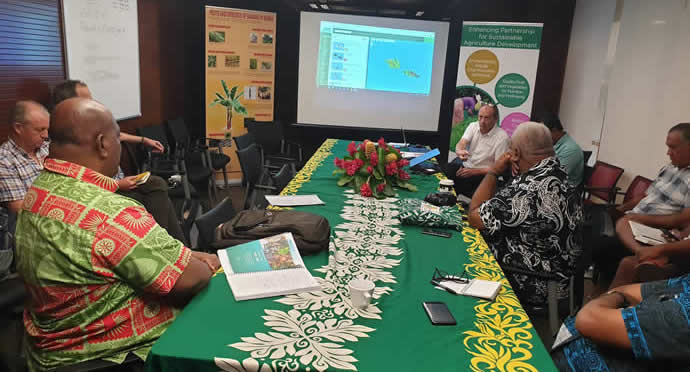PSP development
Soil mapping in the Pacific has significant challenges.
In particular, islands are often remote, populations are small, financial resources and expertise very limited, and through emigration of highly trained people institutional strengthening is often short-lived, requiring rebuilding to leverage past development work.

Soil mapping
For decades, soil scientists from Manaaki Whenua have been visiting Pacific Island countries and territories to collect soil samples and map soil patterns. This work is vital to help decision-makers improve their soils knowledge and land management practices.
The New Zealand government has had a long history of supporting soil and land resources research in the Pacific funding technical assistance to Pacific Island countries, through:
- soil surveys,
- soil analysis (chemistry, physics, mineralogy),
- soil characterisation,
- soil classification,
- soil fertility analysis,
- agronomic studies,
- soil interpretation for land use,
- technology applications of soils data, and
- training for national and regional staff working in soils and agricultural research.
The work has been mainly conducted in the southwest Pacific – the Cook Islands, Fiji, Niue, Tonga, and Western Samoa (1989).
Collaborations
The Pacific Soil Portal is a regional effort to collate and make available information, knowledge and advice relating to soils more readily available to a wide variety of soil and land users.
This initiative started as a collaboration between Manaaki Whenua Landcare Research (MWLR) and the Pacific Community’s Land Resources Division (SPC-LRD) and was endorsed by the Heads of Government Departments from 23 Pacific Island Countries and Territories (PICTs) at Heads of Agriculture and Forestry Services.
More recently it was supported by the Pacific Soil Partnership which united New Zealand, Australia, and 15 PICTs as a regional node of the FAO Global Soil Partnership.
This support lead to a 3-year project “Soil management for resilient agriculture in Pacific Islands”funded by the Australian Centre for International Agricultural Research, lead by CSIRO with collaborators from MWLR, SPC-LRD and five PICTs (Fiji, Samoa, Tonga, Kiribati and Tuvalu) that included funding to develop and release the Pacific Soils Portal.
It brings together soil data, dating back to the 1960s, for five Pacific countries – Fiji, Samoa, Tonga, Kiribati, and Tuvalu.